Choosing the Right Type of Grass for Your Lawn
Creating a lush, green lawn begins with selecting the right type of grass. The climate you live in and the intended use of your lawn play a significant role in this decision. In this post, we’ll help you choosing the right type of crass for your lawn by exploring various grass types and their suitability in different climates and purposes.
Types of Lawn Grass
Before we dive deeper in the considerations, how to select the right type of grass, lets first dive into the various types of lawn grass. In this article we describe 7 most common ones. besides the these 7 common grass types, we will briefly touch on some additional, less common types as well.
7 Common Grass types
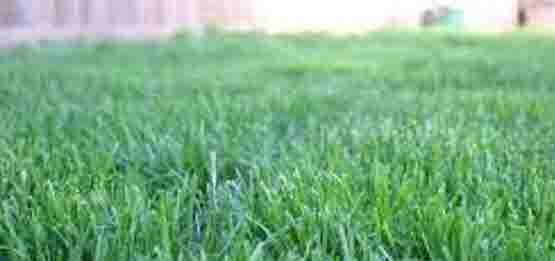
Kentucky Bluegrass: Known for its dark green color and smooth texture. It forms a dense sod, making it ideal for high-quality lawns.
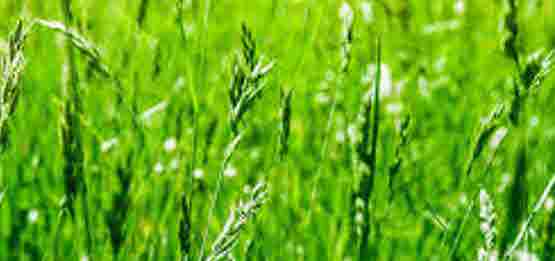
Perennial Ryegrass: Fine-textured and fast-growing, often used for overseeding cool-season lawns.
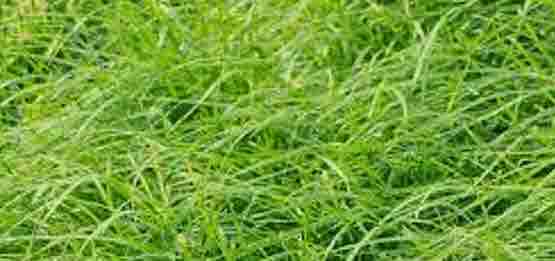
Fescue: Includes tall fescue, which is known for drought resistance, and fine fescue, which is shade-tolerant.
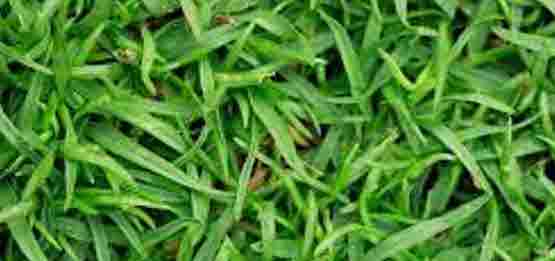
Bermuda Grass: Coarse-textured and resilient, commonly used in warm climates for high-traffic areas. It’s excellent for sports fields and public parks.
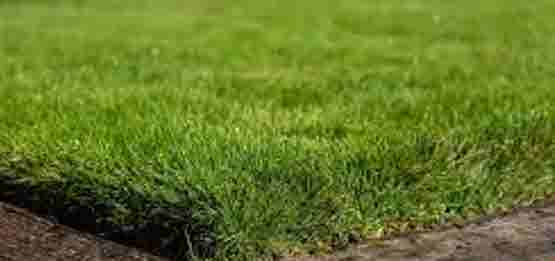
Zoysia Grass: Dense and slow-growing, provides excellent ground cover and weed resistance. It’s very suitable for residential lawns.
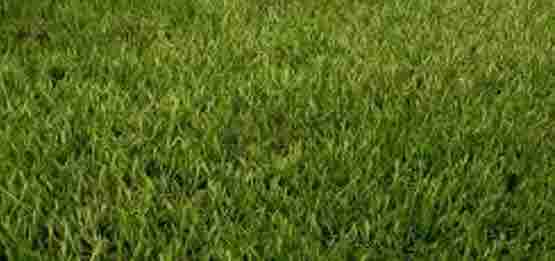
St. Augustine Grass: Coarse-textured with a deep green color, suitable for warm climates and shaded areas.
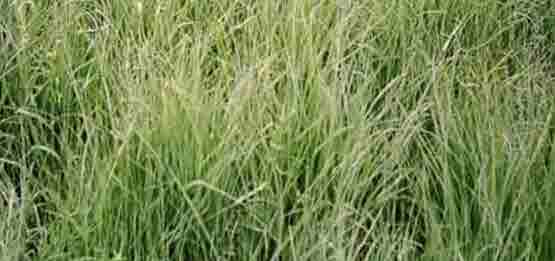
Buffalo Grass: Low-growing and drought-tolerant, suitable for eco-friendly, low-maintenance lawns.
Lesser Known Grass Types:
You may come across some additional grass types when visiting your local gardening center. The carry some special characteristics, which make make them suitable for some special purpose conditions.
- Bahiagrass: Known for its heat and drought tolerance, making it a good choice for warmer climates. It’s suitable for low-maintenance areas like roadside slopes and open fields.
- Centipede Grass: Low-maintenance and slow-growing, ideal for acidic soils and warm climates. It’s ideal for residential lawns with low fertility soil.
- Bentgrass: Often used for golf course greens due to its fine texture and ability to be mowed very short.
- Kikuyu Grass: Vigorous and aggressive, it’s suitable for warm climates and high-traffic areas.
- Seashore Paspalum: Tolerant of saline soils, commonly used in coastal areas and on golf courses.
Climate Considerations
Choosing the right type of grass for your lawn relies heavily of understanding your climate. This is the first step in choosing the right grass. Different grass types thrive in various temperature ranges and rainfall levels.
Cool-Climate Grasses
These grasses grow best in regions with cold winters and mild summers. They typically flourish in temperatures between 60°F to 75°F (15°C to 24°C).
Climate Zone: Cool, humid regions (e.g., northern United States, parts of Canada, Northern Europe)
- Kentucky Bluegrass: Known for its rich green color and fine texture. It is ideal for areas with ample water and cooler temperatures.
- Perennial Ryegrass: Germinates quickly and provides an attractive, fine-textured lawn. It’s also wear-resistant, making it suitable for high-traffic areas.
- Fescue: Includes varieties like tall fescue and fine fescue, which are drought-tolerant and shade-tolerant, respectively. Ideal for lawns with varying sun exposure.
Warm-Climate Grasses
These grasses thrive in hot summers and mild winters, performing best in temperatures between 80°F to 95°F (27°C to 35°C).
Climate Zone: Warm, sunny regions (e.g., southern United States, Australia, parts of Africa)
- Bermuda Grass: Highly drought-tolerant and robust. It’s perfect for sunny, high-traffic areas, including sports fields.
- Zoysia Grass: Offers good drought tolerance and a dense, carpet-like appearance. Zoysia is ideal for both sunny and partially shaded areas.
- St. Augustine Grass: Grows well in warm climates and provides a lush, coarse-textured lawn. It’s suitable for shaded areas and coastal regions. It can also be very suitable for warm and sunny coastal regions e.g. coastal Mediterranean,
Transition Climate Zone Grasses
If you live in a region with both hot summers and cold winters, you’re in the transition zone. These areas require a mix of cool and warm-season grasses.
Climate Zone: Arid and semi-arid regions (e.g., central and western United States, parts of Australia)
- Tall Fescue: Tolerant of a wide range of temperatures and conditions, making it a versatile choice for the transition zone.
- Zoysia: Adaptable to both cool and warm climates, providing a resilient and attractive lawn.
Climates Requiring Drought-Tolerant Grasses
Drought-tolerant grasses are specially adapted to thrive in regions with limited water availability. These areas are typically characterized by:
Climate Zone: Arid or semi-arid conditions, with limited rainfall and high temperatures (Southwestern United States, Great Plains, Australia, Northern Africa, Central Asia, South America dessert, Mediterranean regions including Turkey.
- Hot Summers: Temperatures often soar during summer, leading to high rates of evaporation and minimal rainfall.
- Low Annual Precipitation: Drought-prone regions receive less than average annual rainfall. These areas might experience extended periods without rain.
- High Evaporation Rates: Due to high temperatures, water evaporates quickly from the soil, leaving little moisture for plants.
- Arid and Semi-Arid Conditions: These regions might have sandy or rocky soils with poor water retention.
Buffalo Grass: A native prairie grass with a fine texture and blue-green color. It requires minimal water and maintenance.
Other Warm-climate grasses will prosper quite well too, however extreme drought is still advised to be avoided. They will loose their lush green appearance, but will not die.
Additional Grasses:
- Bahiagrass:
- Climate Zone: Warm, sunny regions (e.g., southeastern United States, parts of South America)
- Temperature Range: 27°C to 35°C (80°F to 95°F)
- Centipede Grass:
- Climate Zone: Warm, acidic soil regions (e.g., southeastern United States)
- Temperature Range: 27°C to 35°C (80°F to 95°F)
- Bentgrass:
- Climate Zone: Cool, humid regions (e.g., northern United States, parts of Canada, Northern Europe)
- Temperature Range: 15°C to 24°C (60°F to 75°F)
- Kikuyu Grass:
- Climate Zone: Warm, sunny regions (e.g., southern United States, parts of Africa)
- Temperature Range: 27°C to 35°C (80°F to 95°F)
- Seashore Paspalum:
- Climate Zone: Coastal regions (e.g., southeastern United States, coastal Mediterranean)
- Temperature Range: Adaptable to coastal conditions
Purpose Considerations
When choosing the right type of grass for your lawn, the purpose of your lawn will influence the type of grass suitable. Here are some common purposes and suitable grass types:
- General Purpose Lawns: For standard home lawns, aesthetics and ease of maintenance are key.
- Kentucky Bluegrass: Offers a lush, uniform appearance, perfect for front and backyards.
- Zoysia Grass: Low maintenance and visually appealing, suitable for family lawns.
- High-Traffic Areas: Lawns that see a lot of foot traffic, such as play areas or sports fields, need durable grass.
- Bermuda Grass: Extremely tough and quick to recover from wear and tear.
- Perennial Ryegrass: Rapid germination and wear resistance make it ideal for heavily used areas.
- Shaded Areas: If your lawn has lots of trees or is shaded by buildings, choose a shade-tolerant grass.
- Fine Fescue: Excels in shaded conditions and maintains a beautiful green color.
- St. Augustine Grass: Also performs well in shaded and semi-shaded areas.
- Drought-Prone Areas: For regions with limited water availability, drought-tolerant grasses are essential.
- Buffalo Grass: A native prairie grass that requires minimal water and maintenance.
- Bermuda Grass: Highly drought-resistant, maintaining green cover even in dry conditions.
Know Your Soil
Soil type plays a critical role in determining which grass will thrive on your lawn. Here’s an overview of how different soil types can influence your choice of grass:
Sandy Soil
Sandy soil is characterized by large particles, which results in quick drainage but poor water and nutrient retention. Grasses that do well in sandy soil typically have deep root systems to access water.
- Bermuda Grass: Known for its deep roots and drought tolerance, it’s an excellent choice for sandy soils.
- Zoysia Grass: Another grass with deep roots that perform well in sandy conditions, providing a dense and hardy lawn.
- Tall Fescue: Although usually a cool-season grass, certain varieties can adapt to sandy soil by developing deep root systems.
Clay Soil
Clay soil has fine particles that compact easily, leading to poor drainage and aeration. It often retains water and nutrients well but can become waterlogged.
- Tall Fescue: Performs well in clay soil due to its tolerance for varying moisture levels.
- Buffalo Grass: Adaptable to many soil types, including clay, and requires minimal maintenance.
- Kentucky Bluegrass: Can adapt to clay soils but requires good drainage and aeration practices.
Loamy Soil
Loamy soil is considered the ideal soil type for most grasses. It has a balanced mix of sand, silt, and clay, offering good drainage, nutrient retention, and aeration.
- Kentucky Bluegrass: Thrives in loamy soil, creating a lush, dense lawn.
- Perennial Ryegrass: Grows quickly and thrives in loamy conditions, perfect for overseeding.
- Zoysia Grass: Performs exceptionally well in loamy soil, providing a resilient and attractive lawn.
Silty Soil
Silty soil has fine particles that retain moisture and nutrients well but can become compacted. It offers moderate drainage and is relatively fertile.
- Perennial Ryegrass: Grows well in silty soil due to its fast germination and nutrient uptake.
- Tall Fescue: Adapts well to silty conditions, providing a durable and attractive lawn.
- St. Augustine Grass: Performs well in silty soil, especially in shaded or semi-shaded areas.
Chalky Soil
Chalky soil is alkaline and often stony, with poor nutrient retention. It can drain well but may require soil amendments to balance pH levels and nutrient availability.
- Tall Fescue: Tolerant of a wide range of soil conditions, including chalky soil.
- Zoysia Grass: Adaptable to various soil types, including alkaline conditions.
- Buffalo Grass: Low maintenance and adaptable to chalky soil, thriving in tough conditions.
Peaty Soil
Peaty soil is acidic, dark, and rich in organic matter, with good moisture retention. It can benefit from pH adjustments for certain grass types.
- St. Augustine Grass: Prefers slightly acidic to neutral soils, making it a good candidate for peaty conditions.
- Fescue: Various types of fescue can adapt to slightly acidic soils, providing a resilient lawn.
- Kentucky Bluegrass: Can grow in peaty soil with proper pH adjustment and maintenance practices.
Conclusion
Choosing the Right Type of Grass for Your Lawn involves considering your local climate and the specific needs of your lawn. By understanding the characteristics of different grass types, you can create a beautiful, healthy lawn that thrives in your environment. After your have chosen the right type of grass, make sure you also take care of your lawn properly.
